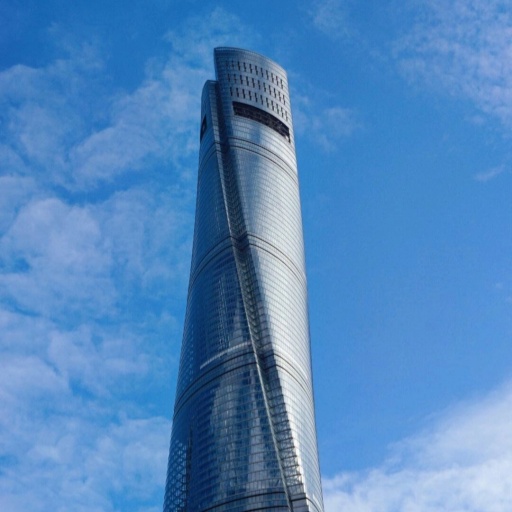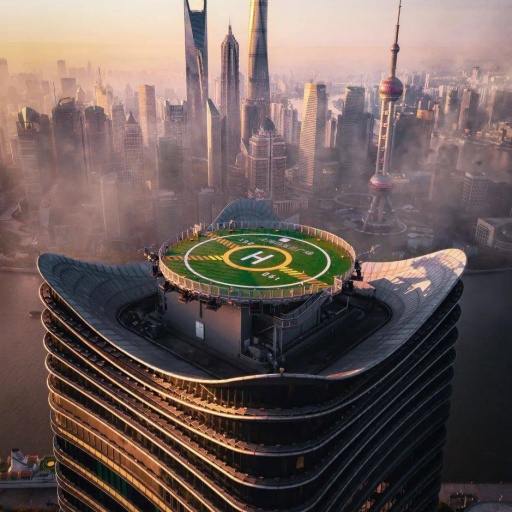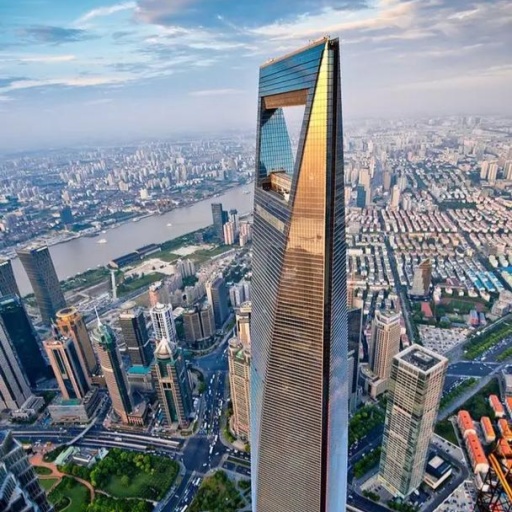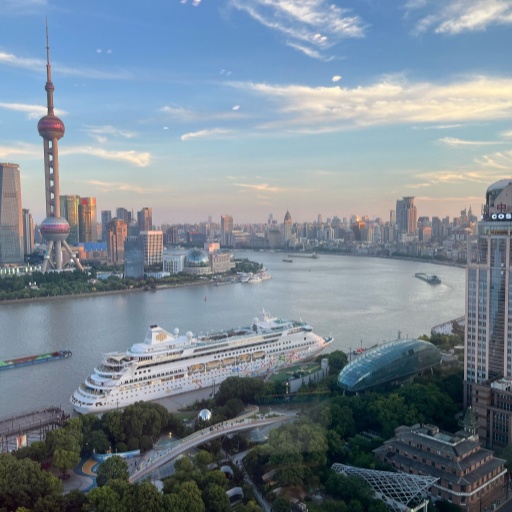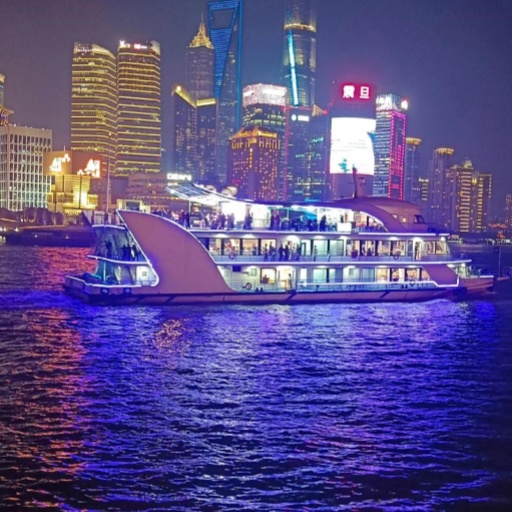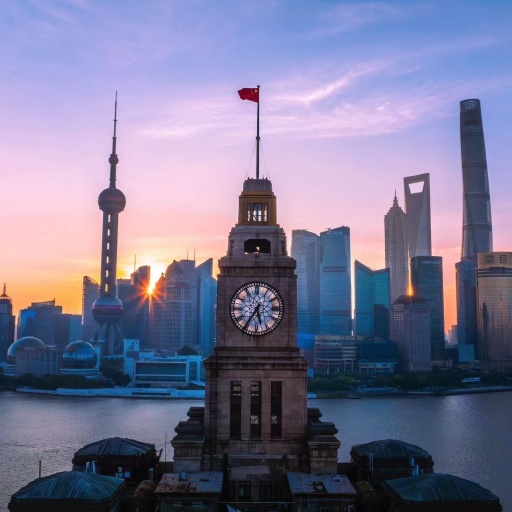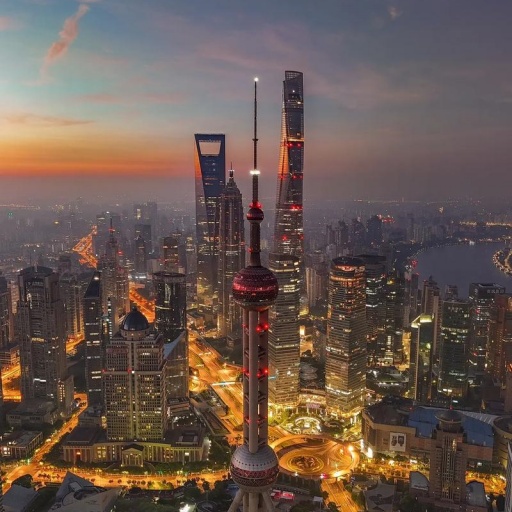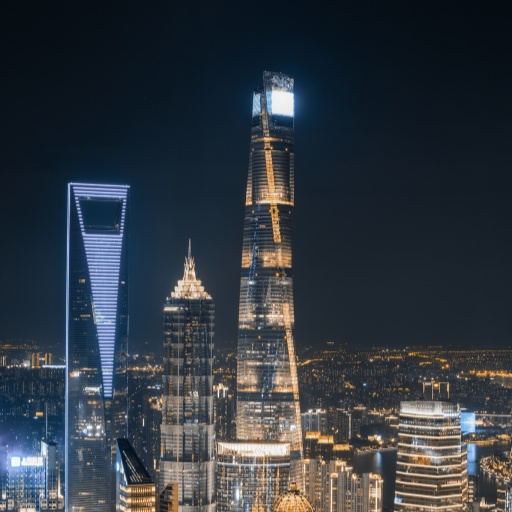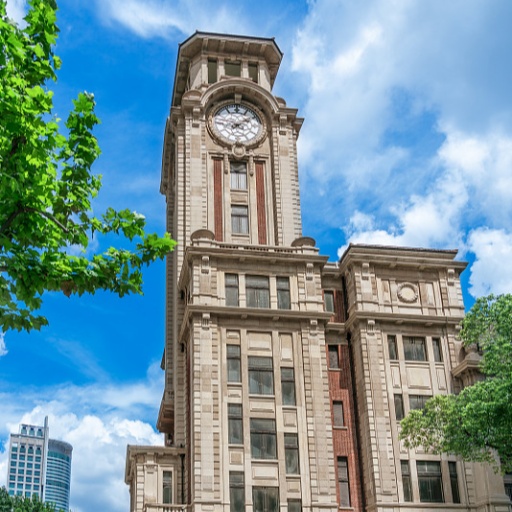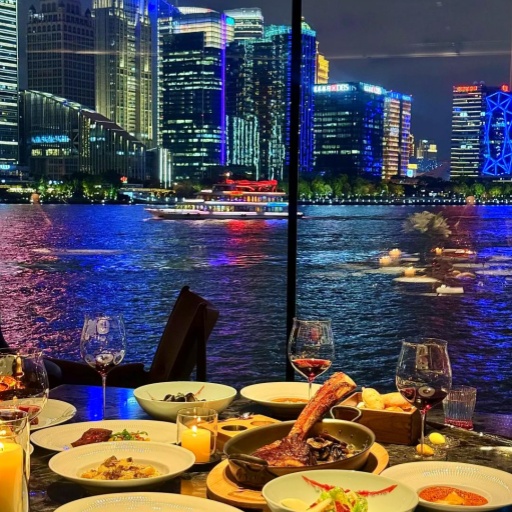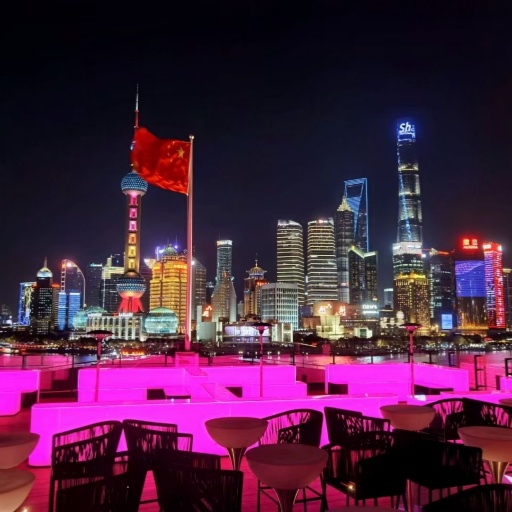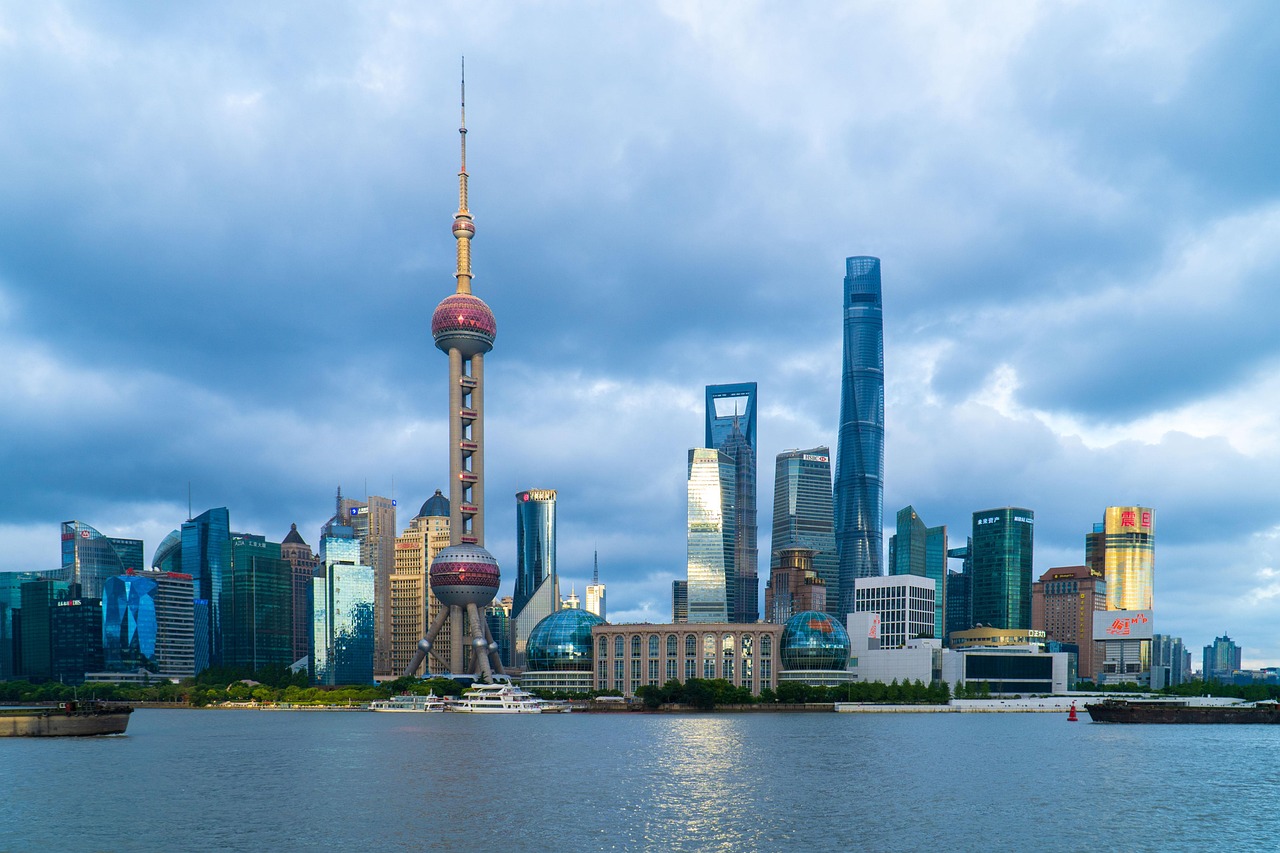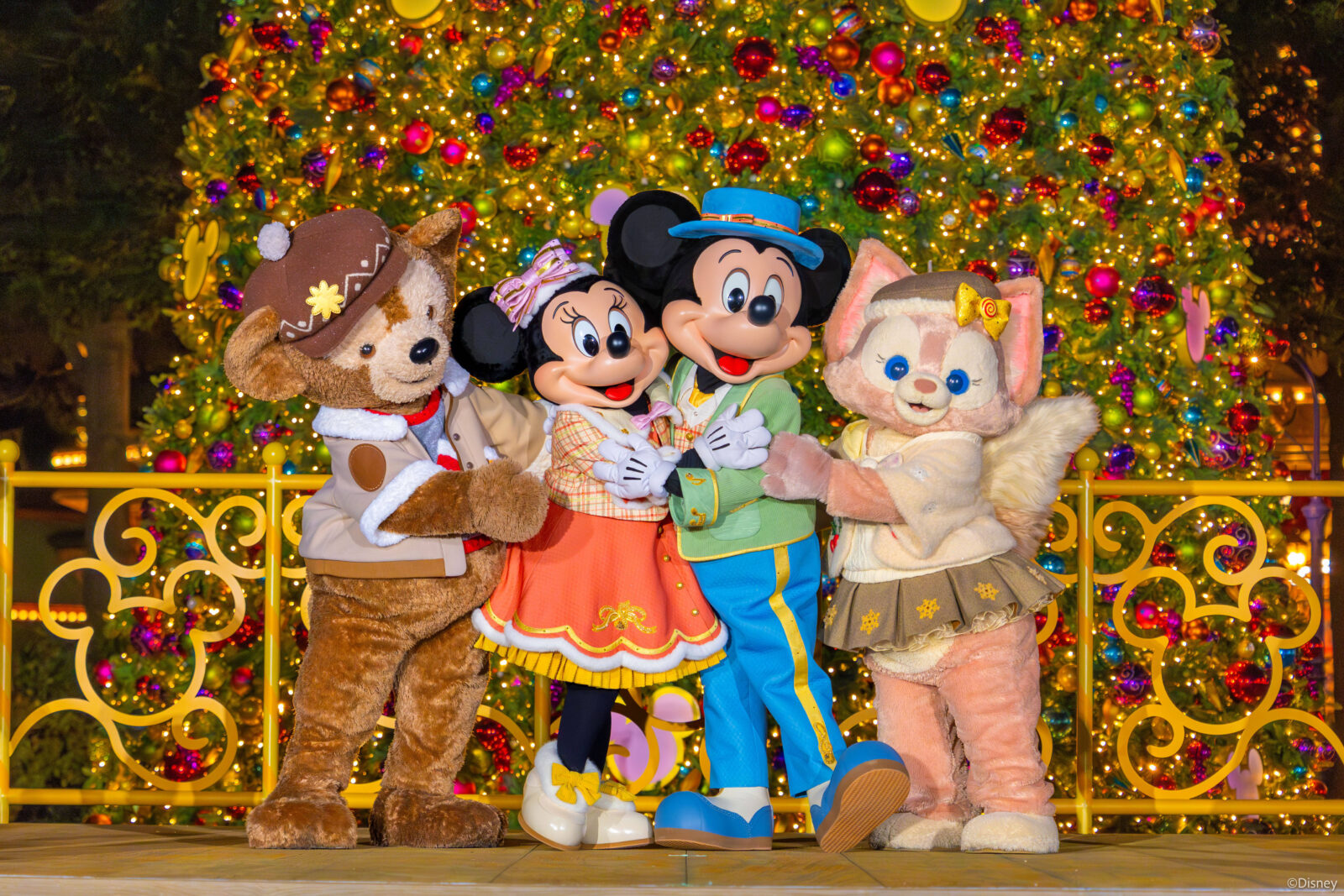The Shanghai skyline is a stunning display of contrast and creativity, where futuristic towers rise beside historic architecture along the Huangpu River. This mix of modern ambition and cultural heritage gives the city its unforgettable look. Landmarks like the Oriental Pearl Tower and Shanghai Tower stand as symbols of progress and pride. Whether you're watching from the Bund or a rooftop in Pudong, the skyline shifts with every hour—from sunrise glow to glittering night lights. This guide takes you to the best skyline viewpoints, highlights top places to stay, and shares nearby sights that bring your trip to life. Get ready to see the Shanghai skyline in all its vibrant glory.
What Makes the Shanghai Skyline So Unique?
- Shanghai Tower
- White Magnolia Plaza
- Shanghai World Financial Center
The Stunning Blend of East and West
Shanghai’s skyline stands out thanks to its rich cultural mix. Futuristic towers rise beside classic European buildings, creating a harmony that feels completely natural. This blend is a big part of Shanghai’s unique charm. When you stroll along the Bund and gaze across the river, it’s like witnessing two worlds merging effortlessly. No other city balances old and new quite like this. Every building tells a story and adds its own unique touch.
Modern glass skyscrapers stretch boldly into the sky, while just behind them, colonial-era buildings whisper tales of old-world charm. This striking contrast is what makes Shanghai’s skyline so special. It’s not just about the height or shape of buildings. It’s about the vibe, the spirit, and the meeting of different times. This mix stirs emotions—you can really feel it when the city lights sparkle at night. Everything shines with intention, as if history and the future are having a conversation.
Then, there’s the city’s geography. The Huangpu River slices through Shanghai like a ribbon, dividing the skyline into two distinct parts. On one side, Pudong dazzles with its modern marvels. On the other, Puxi holds onto its grounded, historical roots. This balance creates a view that stays with you. Whether it’s your first or fifth visit, Shanghai’s cityscape always feels fresh, alive, and full of surprises.
The Most Iconic Buildings Defining Shanghai’s Skyline
Shanghai’s skyline looks like a vision from the future — sleek, bold, and full of contrasts. From across the river, it almost seems unreal. The towers rise like sculptures of glass and steel, sparkling in daylight and glowing after dark. Every angle reveals something new. It’s not just a cluster of tall buildings—it’s a story told through shapes and light. These landmarks embody the city’s ambition, beauty, and constant evolution.
At the heart of it all is the Oriental Pearl Tower. Its colorful, spherical design grabs your attention instantly. Futuristic yet playful, it stands out like no other. Take the elevator to the top and walk on the glass floor for a thrilling panoramic view. Sunset is the best time to visit—the warm golden light perfectly illuminates the tower, showing why it’s one of Shanghai’s most beloved icons.
Then there’s the Shanghai Tower, the tallest in the city. It twists upward like a ribbon caught in the wind, radiating power even from the ground. The elevator whisks you up in seconds to an observation deck with jaw-dropping views. Watch rooftops melt into the horizon at dusk for a dreamy, soft light. Nearby, the Jin Mao Tower adds a layer of tradition, blending ancient Chinese architectural style with bold modern geometry. Look down its hollow center—it’s dizzying yet stunning. This alone makes it a must-visit.
Right beside Jin Mao stands the Shanghai World Financial Center, nicknamed the “bottle opener” for its distinctive cutout. Despite its size, it looks light and elegant. Dare to walk the Skywalk and look straight down—it’s thrilling and slightly terrifying. Lastly, the White Magnolia Plaza rounds out the skyline with grace and sleekness. Each building plays a vital role, coming together to form the soul of Shanghai’s skyline. They complement one another, telling a story of a city always pushing higher.
This is what makes the Shanghai skyline truly special. It’s more than tall buildings—it’s the feeling you get looking at it. It’s where East meets West, old meets new, and steel meets sky. No other skyline tells such a vivid story. The blend of design, culture, and ambition creates something unforgettable. Each landmark adds its own color, shape, and meaning. Together, they form a living symbol of Shanghai. You don’t just see the skyline—you feel it. Watching it shift from sunrise to nightfall, glowing with life after dark, you’ll notice something new every time you return.
How to Experience Shanghai and Its Amazing Skyline?
- Gaze over the Huangpu River
- Admire the skyline at night
- Take a Huangpu River cruise
Where Can You Get the Best View of the Skyline?
While the Shanghai skyline itself is stunning, nearby attractions offer a refreshing contrast. Just steps away, you’ll find temples, gardens, and historical sites. These spots offer a softer, quieter side of the city and provide a break from the towering skyscrapers. Luckily, many of these places sit right beside the skyline, so you can easily switch between urban panoramas and cultural exploration. Let’s take a look at some of the best nearby attractions.
The Bund remains the most iconic spot for skyline views. Standing along its waterfront promenade, you face the full sweep of Pudong’s towers. Whether it’s your first time or a repeat visit, the Bund never loses its charm. Mornings are peaceful and quiet, but evenings bring out a special kind of magic. Arriving just before sunset lets you catch the golden hour glow, followed by the buildings lighting up as night falls. For the best shots, position yourself near the stone railing by the Garden Bridge—this angle offers great depth and balance, capturing the entire Shanghai skyline in one frame. If you’re shooting at night, a tripod is definitely worth bringing.
Directly across the river, the Lujiazui Riverside Promenade offers a quieter, more relaxed atmosphere. The path runs along the riverbank, giving you a lower angle view of the skyline. This perspective highlights the towers’ height and drama. Visiting around 4 to 5 PM means warm, soft light without harsh shadows. Walk south toward the river’s bend for a clean, wide shot where the Shanghai skyline feels close enough to touch. It’s also a popular spot for time-lapse photography.
For a high vantage point, the Jin Mao Tower Observation Deck places you in the heart of the city. Compared to other decks, it’s less crowded, letting you enjoy great views of the nearby towers. Late morning offers sharp, clear light, perfect for capturing reflections on the glass buildings. A wide-angle lens works best here, especially if you tilt your camera slightly downward to include surrounding rooftops. This viewpoint reveals how the Shanghai city skyline fits together like a giant puzzle. It’s a fantastic spot for photos in any season.
For the highest panoramic view, head to the Shanghai Tower Observation Deck. Here, you get a full 360-degree cityscape that stretches far beyond the immediate skyline. Visiting around 5:30 PM is ideal—you’ll catch the last daylight alongside the first city lights. Bring a zoom lens to frame distant towers, and look westward for dramatic sunset shots. The tower’s spiral design adds unique flair to your photos. Don’t forget to take a few shots through the glass floor panels—it’s a thrilling way to experience Shanghai’s skyline from above.
Finally, the Huangpu River Cruise offers a dynamic, moving perspective of the skyline. Cruising around 6:30 PM lets you watch the city light up gradually. For the best angles, sit on the upper deck and bring a camera with motion stabilization. The skyline’s reflection in the water adds a dreamy layer to your photos. Viewing Shanghai’s skyline from the river brings the city to life in a way no static viewpoint can match—it's an experience worth repeating.
Where to Stay for the Best Skyline Experience?
If you want to truly enjoy the Shanghai skyline, it all starts with where you stay. The right hotel can make all the difference. Imagine waking up to a breathtaking view of the city lights or sipping coffee as the sun rises over towering skyscrapers. Those are moments you’ll remember forever. Therefore, location is key. Focus on hotels facing the Huangpu River, where the skyline shines its brightest. Both Pudong and the Bund offer some of the clearest and most spectacular views, giving you front-row access to Shanghai’s beauty.
On the Pudong side, consider the Park Hyatt Shanghai, located inside the World Financial Center. From its high floors, the skyline unfolds right beneath you. Another excellent choice is the Ritz-Carlton Pudong, with a rooftop bar perfect for enjoying nighttime views. If luxury combined with unbeatable vistas is what you seek, this is the place to be. Also, check out the J Hotel Shanghai Tower—one of the tallest hotels globally. Staying here feels like floating above the city, offering unmatched views of Shanghai’s skyline as it changes with the light.
If you prefer staying across the river, no worries. The Fairmont Peace Hotel puts you right on the Bund. The building’s classic charm is impressive, but the views steal the show. From here, you’ll enjoy a sweeping panorama of Pudong’s towers. Don’t miss the rooftop bar for some of the best night shots. Another great option is the Waldorf Astoria Shanghai on the Bund, where river-facing rooms offer 24/7 skyline views. Booking a room on a high floor rewards you with stunning sunrises and sunsets. From these hotels, you’ll see why the Shanghai city skyline captures hearts—it becomes part of your daily rhythm and never gets old.
When to See the Shanghai Skyline at Its Best?
- Sunrise
- Sunset
- Nighttime
Timing is everything when it comes to enjoying the Shanghai skyline. This iconic view changes throughout the day—and each moment brings a unique kind of magic. Whether you're a photographer, a romantic, or just someone who loves a good view, here's when to go.
Golden Hour: Sunrise and Sunset
Sunrise and sunset in Shanghai are golden hours for a reason. These fleeting windows offer soft, directional light that bathes the city in warmth. During these times, the skyline is at its most photogenic—and most peaceful.
Sunrise (5:30–6:30 AM in summer, 6:30–7:30 AM in winter): Start your day with the first light from Pudong Riverside Promenade, near the Shanghai World Expo Cultural Park. You’ll get a wide-angle view of the Bund and the historic waterfront from across the river. Another great spot? Lujiazui Central Green Belt. It’s quiet, slightly elevated, and perfect for setting up a camera.
Sunset (5:00–6:30 PM in winter, 6:30–8:00 PM in summer): The Bund is undoubtedly the top choice at sunset, but it can get crowded. For a more exclusive view, consider rooftop bars like CHAR Bar at Hotel Indigo or Flair at The Ritz-Carlton Pudong. Both offer panoramic views with a cocktail in hand. For budget-friendly options, Binjiang Park in Pudong is peaceful, open to the public, and perfectly positioned.Want precision? Use apps like PhotoPills or Golden Hour One to plan around the shifting sunrise and sunset times.
Nighttime: The Skyline Comes Alive
At night, Shanghai transforms into a living light show. Skyscrapers like the Oriental Pearl Tower, Jin Mao Tower, and Shanghai Tower turn into vertical canvases of color. Reflections shimmer in the Huangpu River, and the entire skyline sparkles like it’s performing just for you.
Prime time is between 8:00–10:00 PM. This is when most buildings reach peak illumination and the crowds at the Bund begin to thin. If you’re looking for height, go up to the Shanghai Tower’s Top of Shanghai Observatory—it’s the highest viewing platform in China. For river-level views, hop on a Huangpu River night cruise. Choose one that leaves from Shiliupu Wharf or Oriental Pearl Dock, and aim for the 8:00 PM slot.
Craving atmosphere? Bar Rouge, Vue Bar, and High & Dry offer skyline views with music, drinks, and a front-row seat to the city’s nocturnal glam.Bring a lightweight tripod if you’re into photography. You’ll want to capture those long exposures across the river from Waitan Sightseeing Platform.
Clear Days vs. Foggy Days
Clear days are ideal for crisp photos. You’ll see every spire and reflection with clarity. The day after a rain shower is especially good—fewer particulates mean better visibility. Try Xuhui Riverside Park for a more relaxed vibe and unique angles of the skyline.
Foggy or smoggy days might not be great for sharp photos, but they create a dreamy, mysterious atmosphere. The tops of towers fade into clouds. Colors soften. If you’re into moody, cinematic visuals, these days are for you. Head to Century Park’s Ferris Wheel for elevated views even in haze.Use apps like Windy or AirVisual to track air quality and visibility before planning your outing.
Seasonal Tips for Visitors:
- Spring (March–May): Mild weather and blooming flowers make the city feel alive. Great for day and night skyline views.
- Summer (June–August): Hot and humid, but sunsets are vibrant. Visit early morning or after 7 PM.
- Autumn (September–November): Probably the best season. Clear skies, perfect temperatures, and golden light.
- Winter (December–February): Cold but crisp. Skies are often clear. Nights are quiet and magical, especially near the holidays.
- Bonus: Special Events and Holidays
The Shanghai skyline goes all out for major events. Think Chinese New Year, National Day, or the Shanghai Tourism Festival. Buildings light up with themed projections. Fireworks might even paint the sky.Plan your visit around these events if you want a truly unforgettable skyline experience. Just be ready for the crowds.
What Other Attractions Are Near the Skyline?
- The Bund
- Jing’an Temple
- Shanghai History Museum
The Bund: Historic Waterfront and Scenic Walks
The Bund is Shanghai’s most famous waterfront, stretching along the Huangpu River with grand historic buildings. These structures date back to the early 1900s and tell stories of Shanghai’s past. Walking here feels like stepping back in time. The colonial architecture contrasts beautifully with the modern skyline across the river, creating a unique blend of history and modernity. This area is perfect for a slow, relaxing stroll where you can enjoy the river breeze, watch boats pass, and soak in the city’s vibrant energy.
Many visitors come to the Bund at night to see the skyline lights reflected on the water, creating a magical atmosphere. Early evening is the best time to visit—the fading sunset colors warm your photos naturally. The Bund also hosts street performers and vendors, so you can grab a snack or shop for souvenirs while taking in the view. It’s a lively place where the past meets the present. Don’t miss the famous Peace Hotel on the Bund—its classic design contrasts sharply with the futuristic towers across the river. From here, you get a sweeping panorama of the Shanghai skyline. The Bund isn’t just a viewpoint; it’s the heart of the city and a must-visit for anyone exploring Shanghai’s skyline and surroundings.
Jing’an Temple: Spiritual and Cultural Stop
Nestled in the heart of Shanghai, Jing’an Temple offers a peaceful escape from the city’s hustle. The temple dates back over 700 years and features beautiful architecture and tranquil gardens. Its golden statues and red walls glow warmly, providing a striking contrast to the glassy towers in the Shanghai skyline. Many locals visit the temple to pray and find calm, while tourists appreciate the cultural insight and quiet atmosphere.
Throughout the year, the temple hosts festivals and traditional ceremonies that offer a deeper taste of local culture. The morning incense smoke creates a mystical ambiance, especially as monks perform ancient rituals. Nearby, small shops sell prayer beads and souvenirs, inviting visitors to slow down and reflect. The temple’s convenient location near multiple metro lines makes it easy to reach from the Bund or Pudong. After enjoying this serene spot, you can quickly return to catch stunning skyline views. Jing’an Temple’s peacefulness offers a perfect balance to Shanghai’s energetic cityscape and is a must-see for those looking beyond skyscrapers.
Yuyuan Garden: Classical Chinese Garden Experience
Yuyuan Garden is a classical Chinese garden nestled in the old part of Shanghai. It provides a peaceful retreat from the busy city streets. With its beautiful ponds, rockeries, and traditional pavilions, walking through the garden feels like stepping into a traditional painting. The calm water reflects nearby buildings and sky, creating a tranquil atmosphere that contrasts nicely with the nearby Shanghai skyline.
Next to the garden, Yuyuan Bazaar bustles with shops and eateries, perfect for sampling local snacks and buying handicrafts. The market’s lively energy adds an exciting layer to your visit. Enjoy tea in a traditional teahouse or savor fresh dumplings. The area perfectly blends old-world charm with modern city life, making it ideal for exploring beyond just skyline views.
Yuyuan Garden also offers excellent photo opportunities. From certain spots, you can frame the garden against distant towers, capturing a unique mix of nature and urban life. Visiting here lets you experience a different side of Shanghai, offering a refreshing break from the towering skyscrapers that define the Shanghai city skyline.
Shanghai History Museum: Dive Into Local History
Located right beneath the Oriental Pearl Tower, the Shanghai History Museum is the perfect place to dive into the city’s rich past. The museum’s extensive exhibits cover Shanghai’s culture, economy, and people. Walking through its halls, you’ll see how Shanghai evolved from a small fishing village to a global metropolis. The museum adds valuable context to the impressive skyline outside, helping you appreciate what shaped the city’s rapid growth.
The displays include ancient artifacts, photos, and models that tell stories of the city’s challenges and successes. The museum is interactive and easy to follow, suitable for all ages and interests. Many visitors say it deepens their appreciation for the modern Shanghai skyline. After your visit, you’ll likely see the city’s towers in a new light—each one built on a foundation of rich history.
Thanks to its location near Lujiazui, you can combine a history tour with breathtaking skyline views. Step outside to see the futuristic towers rise up, and notice the striking contrast between old and new. The Shanghai History Museum is a must-visit for travelers seeking more than just skyline photos.
What Else Can You Do Around the Skyline Spots?
- Sip cocktails while overlooking the Bund
- Enjoying a Meal by the Huangpu River
- Socialize over drinks at rooftop bars
Must-Try Eats Near the Skyline
Exploring the Shanghai skyline can work up an appetite. Luckily, the area offers plenty of delicious food options nearby. From street snacks to fine dining, there’s something for every taste.If you want to try local flavors, start with xiaolongbao—those famous soup dumplings. Many well-known spots serve them around Yuyuan Bazaar. The juicy, flavorful filling is a must-try. Don’t miss shengjianbao either, a pan-fried version that’s just as tasty. For something quick and authentic, street stalls sell snacks like candied fruit and fried dough sticks. These treats give you a real taste of Shanghai’s street food culture.
If you prefer upscale dining, head to rooftop restaurants in Pudong. Places like M on the Bund and Sir Elly’s offer world-class menus with spectacular skyline views. Dinner here turns every meal into a special occasion. Whether you want casual bites or fancy meals, dining near the skyline makes your visit even more memorable.
Exciting Nightlife by the Skyline
As night falls, the Shanghai skyline truly shines. The city’s nightlife matches the dazzling lights. Bars and clubs near the Bund and Lujiazui buzz with energy. Whether you want a quiet drink or a lively party, you’ll find your spot.
Start at rooftop bars with skyline views. These places serve great cocktails and have trendy vibes. Bar Rouge and The Nest are popular picks. You can sip your drink while watching skyscrapers sparkle—a perfect way to unwind after sightseeing.If you want to dance, Shanghai offers clubs with various music styles—from electronic beats to jazz lounges. Night markets near the Bund also provide fun experiences. Try local snacks and shop under glowing city lights. The nightlife adds another layer to your skyline adventure.
Reference
Of course, in addition to the attractions near the skyline mentioned above, there are some must-see attractions and best activities in Shanghai that you can't miss. You can learn about them through this article we provide.
Frequently Asked Questions (FAQs)
Q: Does the Shanghai Tower sway?
A:Yes, the Shanghai Tower does sway slightly in strong wind. But don’t worry—it’s completely safe. Engineers designed it to handle typhoons and earthquakes. The gentle sway helps reduce wind pressure. A tuned mass damper at the top balances the motion. You won't feel it during a normal visit. The elevators are super fast and very smooth. On windy days, you might sense a mild movement. It feels more like a soft drift than shaking. The glass is strong and built to handle it. Architects tested the design many times before opening. Safety systems run daily checks on the structure. Staff also monitor wind levels closely. Even on top floors, most visitors don’t notice anything. You’ll enjoy stunning views without concern. So relax and take in the amazing skyline. It’s one of the safest tall buildings in the world.
Q:How do I book tickets for the Shanghai Tower observation deck?
Booking tickets for the Shanghai Tower is easy. You can buy them online or at the entrance. If you want to skip the line, book in advance through travel platforms like Klook, Trip.com, or the official Shanghai Tower website. Most platforms offer mobile tickets—no printing needed.Choose the 118th-floor observatory for the best views. It’s one of the highest in the world. Tickets usually cost around ¥160 for adults, and there are discounts for children and seniors.Visit on a clear day for the full skyline experience. Try going in the late afternoon and stay until nightfall to see the city light up.Also, check combo tickets that include access to nearby attractions like the Shanghai History Museum or the Jin Mao Tower.
Q: How to buy tickets for the Huangpu River cruise?
A:Buying tickets for the Huangpu River cruise is simple and fast. You can book online through travel apps like Trip.com or Klook. These platforms offer English support and instant confirmation. Another option is to buy at the pier. Head to Shiliupu Wharf or the Bund pier early. Ticket booths are easy to spot near the entrance. Staff usually speak some English and accept card payments. Choose between short or long routes. Short ones last 30 minutes and show key skyline views. Longer rides go beyond Lujiazui and return. Try the evening cruise for the best skyline lights. Boats run from morning until 9:30 pm. Arrive 20 minutes early to get good seats. If you want a luxury option, look for dinner cruises. These include meals and offer a quieter ride. Book those in advance, especially on weekends. Overall, it's a smooth and scenic way to enjoy the city.
Q: What are the Must-visit attractions in Shanghai?
A:Shanghai offers a perfect mix of history and modern life. Start with the Bund. It shows colonial architecture and offers skyline views. Next, explore Yu Garden nearby. It’s peaceful and filled with classic beauty. Walk into Old City to see local markets and snack stalls. Then head to Nanjing Road for shopping. It’s one of Asia’s busiest streets. For culture, visit the Shanghai Museum. It's in People’s Square and totally free. Want panoramic views? Go to Shanghai Tower or Oriental Pearl. Both give great photos and views. Don’t skip Tianzifang or Xintiandi. They’re great for art, food, and local life. Take a stroll along Wukang Road for French vibes. At night, see the skyline from a rooftop bar. Each place offers a different side of the city. Together, they make Shanghai unforgettable.
Q: Recommended museums in Shanghai?
A:Shanghai has many museums worth your time. The top one is the Shanghai Museum. It's free and located in People’s Square. Inside, you'll find ancient Chinese art, ceramics, and jade. Exhibits change often, so check ahead. For something modern, go to the Power Station of Art. It’s a converted factory with edgy exhibits. Love film history? Visit the Shanghai Film Museum. It tells stories of China’s cinema world. Science fans will enjoy the Shanghai Science and Technology Museum. It’s great for families with kids. Another option is the Museum of Art Pudong. It’s close to the river and has international shows. History lovers should explore the Shanghai History Museum. It covers the city’s growth from fishing village to megacity. These museums are well-organized and often have English signs. Go early to avoid crowds. Don’t forget to check opening hours and book in advance when needed.
Q: How to get the best experience at the Oriental Pearl Tower?
A:Start early to beat the tour crowds. Buy tickets online to save time. Choose the combo ticket if you want to visit all levels. The main observation deck has glass floors. It offers great photo spots and a thrill. Head up to the Space Capsule for the best views. It’s the highest point in the tower. Visit the History Museum at the base after that. It shows old Shanghai with wax figures and models. Try the rotating restaurant if you're staying longer. You can eat while enjoying skyline views. Evening visits are magical too. Lights reflect off the river beautifully. Arrive 30 minutes before sunset for the full glow. Don’t forget a camera and comfy shoes. Each part of the tower adds to the experience. Plan your visit right and you’ll love it.
Q:How many days do I need to explore Shanghai properly?
A:Three to four days is ideal for exploring Shanghai. With three days, you can cover the major highlights—The Bund, Yu Garden, Nanjing Road, and Pudong’s skyline. You’ll also have time for a river cruise and some local food.If you stay four days, you can dive deeper. Add a day trip to Zhujiajiao Water Town or spend more time in neighborhoods like Tianzifang or the French Concession.Want to explore museums, do some shopping, and catch a show? Four or five days will be more comfortable.Try not to rush it. Shanghai has a lot to offer beyond the skyline. Give yourself time to enjoy the mix of old and new, east and west.
Q:Where can I enjoy traditional Chinese tea near the Bund?
A:If you're near the Bund and want a real tea experience, you’re in luck. Start with Tianshan Tea City, just a short taxi ride away. It’s a multi-level market where you can sample teas from all over China—green, oolong, pu-erh, and more. Most vendors offer tastings and love sharing stories.Prefer a quieter spot? Head to Zen Tea House in the Rockbund area. It’s stylish, peaceful, and perfect for solo travelers or couples.You can also visit Mid-Lake Pavilion Teahouse (湖心亭茶楼) near Yu Garden, only 15 minutes from the Bund. It’s one of Shanghai’s oldest teahouses, full of charm and local flavor.Ask for a traditional tea ceremony. Many places will guide you through the proper way to brew and drink.Tea culture is a big part of Shanghai. Taking time to enjoy it adds depth to your skyline experience. Try pairing your tea with local snacks for the full effect.
